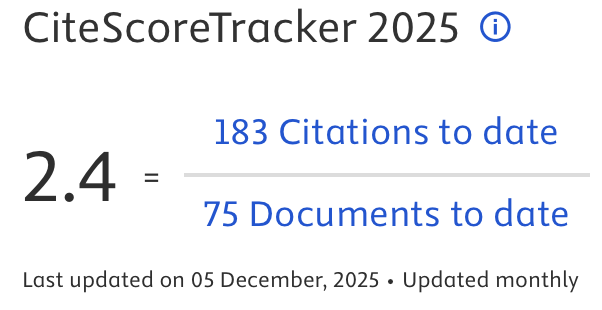Metode Tahfidz Al-Qur’an Untuk Anak Usia Dini (Kajian Atas Buku Rahasia Sukses 3 Hafizh Quran Cilik Mengguncang Dunia)
DOI:
https://doi.org/10.14421/qh.2017.1801-04Abstract
This article discusses methods of memorizing Qur’an for early childhood, as a form of early childhood education. The methods are very various. They are method of talqin, listening record of murottal, reading mushaf, motion and sign, etc. As one of the methods, the writer specifically talks about a way of memorizing qur’an for early childhood in a family of Kamil el-Laboody written on Rahasia Sukses 3 Hafizh Qur’an Cilik Mengguncang Dunia. He successfully educated his three children to be hafiz^ in their early childhood in 4,5 years old. Before entering the main idea, the writer elaborates how Islam (Qur’an and Hadis) and science talk about memorizing Qur’an for early childhood.Keywords: method, memorizing Qur’an, early childhood.
 Abstract viewed: 5498 times
|
Abstract viewed: 5498 times
|
 PDF downloaded = 23166 times
PDF downloaded = 23166 times
References
Amin, M. Nur Kholis Al. “Keluarga Sebagai Dasar Pendidikan Bagi Anak” dalam Insania: Jurnal Kependidikan, Vol. 18, No.1, 2013.
Efendi, Nur dan Muhammad Fathurrohman. Studi al-Qur’an: Memahami Wahyu Allah secara Lebih Integral dan Komprehensif . Yogyakarta: Teras, 2014.
Ghautsani, Yahya bin ‘Abdurrazaq, al. Cara Mudah dan Cepat Menghafal al-Qur’an terj. Zulfan. Jakarta: Pustaka Imam Asy-Syafi’i, 2010.
Hafidz, Ahsin W., Al. Bimbingan Praktis Menghafal al-Qur’an. Jakarta: Bumi Aksara, 2005.
Harun, Salman. Mutiara Al-Qur’an: Aktualisasi Pesan Al-Qur’an dalam Kehidupan. Jakarta: Logos, 1999.
Jalil, Abdul. “ Metode Menghafal al-Qur’an” dalam Suryadi, dkk. Meraih Prestasi di Perguruan Tinggi. Yogyakarta: Jurusan Tafsir Hadis Fakultas Ushuluddin, Studi Agama dan Pemikiran Islam bekerjasama dengan PD Pontren Kementerian Agama RI, 2011.
_________________. “Sejarah Pembelajaran Al-Qur’an di Masa Nabi Muhammad SAW” dalam Insania: Jurnal Kependidikan, Vol. 18, No.1, 2013.
Khalafallah, Muhammad Ahmad. Masyarakat Muslim Ideal: Tafsir Ayat-ayat Sosial terj. Hasbullah Syamsuddin. Yogyakarta: Pustaka Insan Madani, 2008.
Masyhud, Fathin dan Ida Husnur Rahmawati. Rahasia Sukses 3 Hafizh Qur’an Cilik Mengguncang Dunia. Jakarta: Zikrul Hakim, 2016.
Metode Tahfidz Al-Qur’an Untuk Anak Usia Din fidz Al-Qur’an Untuk Anak Usia Din fidz Al-Qur’an Untuk Anak Usia Din fidz Al-Qur’an Untuk Anak Usia Din fidz Al-Qur’an Untuk Anak Usia Din fidz Al-Qur’an Untuk Anak Usia Din fidz Al-Qur’an Untuk Anak Usia Din fidz Al-Qur’an Untuk Anak Usia Din fidz Al-Qur’an Untuk Anak Usia Din fidz Al-Qur’an Untuk Anak Usia Din fidz Al-Qur’an Untuk Anak Usia Din fidz Al-Qur’an Untuk Anak Usia Din fidz Al-Qur’an Untuk Anak Usia Din
Vol. 18, No. 1, Januari 2017 69
______. The Amazing of Kampung al-Qur’an: Rahasia Sukses Menciptakan Kampung al-Qur’an. Jakarta: Zikrul Hakim, 2016.
Mustaqim, Abdul. “Kedudukan dan Hak-hak Anak dalam Perspektif al-Qur’an: Sebuah Kajian dengan Meetode Tafsir Tematik” dalam Musawa: Jurnal Studi Gender dan Islam, Vol.4, No. 2, 2006.
Sa’diyah, Rika. “Melatih Kecerdasan Emosi Anak Usia Dini” dalam Insania: Jurnal Kependidikan, Vol. 18, No.1, 2013.
Shihab, M.Quraish. Tafsir al-Mishbah: Pesan, Kesan dan Keserasian al-Qur’an. Jakarta: Lentera Hati, 2002.
Downloads
Published
How to Cite
Issue
Section
License
Publishing your paper with Jurnal Studi Ilmu-ilmu al-Qur'an dan Hadis means that the author or authors retain the copyright in the paper. Jurnal Studi Ilmu-ilmu al-Qur'an dan Hadis uses license CC-BY-NC-ND or an equivalent license as the optimal license for the publication, distribution, use, and reuse of scholarly works. This license permits anyone to copy and redistribute the material in any medium or format and must give appropriate credit, provide a link to the license, and indicate if changes were made. If you remix, translate, transform or build upon the material you may use it for private use only and not for distribution. Jurnal Studi Ilmu-ilmu al-Qur'an dan Hadis granted an exclusive non-commercial reuse license by the author(s), but the author(s) are able to put the paper onto a website, distribute it to colleagues, give it to students, use it in your thesis, etc, so long as the use is not directed at a commercial advantage or toward private monetary gain. The author(s) can reuse the figures and tables and other information contained in their paper published by Jurnal Studi Ilmu-ilmu al-Qur'an dan Hadis in future papers or work without having to ask anyone for permission, provided that the figures, tables, or other information that is included in the new paper or work properly references the published paper as the source of the figures, tables or other information, and the new paper or work is not direct at a private monetary gain or commercial advantage.
Jurnal Studi Ilmu-ilmu al-Qur'an dan Hadis journal Open Acces articles are distrubuted under the Creative Commons Attribution-NonCommercial-NoDerivatives 4.0 International (CC BY-NC-ND 4.0). Article can be read, copy and redistribute the material ini any medium or format under the following conditions:
Attribution — You must give appropriate credit, provide a link to the license, and indicate if changes were made. You may do so in any reasonable manner, but not in any way that suggests the licensor endorses you or your use.
NonCommercial — You may not use the material for commercial purposes.
NoDerivatives — If you remix, transform, or build upon the material, you may not distribute the modified material.









